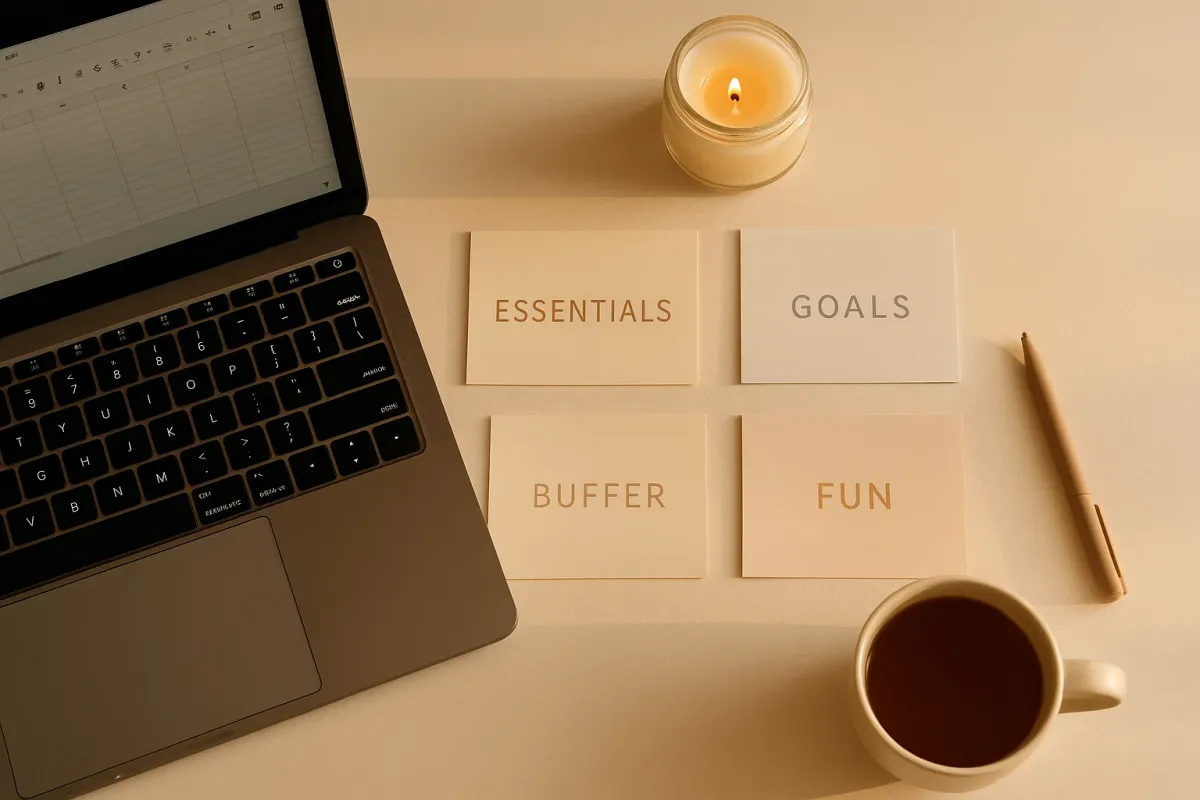How I Organize My Finances in Folders, Not Categories

When I first tried to get serious about budgeting, everyone insisted on the same starting point: assign each expense to a “category.” Food. Shopping. Subscriptions. Insurance. Transportation. Groceries versus takeout versus coffee stops. Before long, I had seventeen overlapping categories and maybe a glimmer of clarity—but more often, a tangle of numbers that just made me sigh.
The problem? Categories felt rigid and disconnected from how money actually played out in my real life. Buying cold medicine counted as “Health,” but what about self-care days? Was a museum visit “Fun” or “Learning”? My spreadsheet grew, but my sense of control shrank.
The turning point came during a batch of quarterly planning at my product job. Staring at a stack of messy design files—constantly reorganized by strict labels—I wondered: What if, instead of labels and categories, I used folders?
Folders are how I organize projects, files, even my email. They’re containers, not rules: they hold what matters, group things by intention, and give me room to flex as life (and priorities) change. So, I tossed out most categories and built a minimalist system that brought me calm and clarity.
The 4-Folder System
Here’s my simple, flexible structure. Four folders, each with a clear purpose.
1. Essentials
This is what I need to live—nothing fancy, but the real backbone:
- Rent or mortgage
- Groceries
- Utilities
- Health costs (insurance, basic care, necessary medications)
2. Goals
The active progress-makers:
- Savings (cash, big purchases, down payment funds)
- Investments (brokerage, 401(k), Roth, etc.)
- Debt payoff (student loans, credit cards, medical, any liabilities)
3. Buffer
My safety net for life’s inevitable unpredictables:
- Emergency fund
- Quarterly or annual costs (insurance, subscriptions)
- Flex cash (anything truly odd or once-in-a-blue-moon)
4. Fun
For living, not just surviving:
- Dining out
- Travel
- Hobbies, gifts, little luxuries
How I use these: Each folder gets a distinct color and section in my Google Sheet. They’re like lanes on a track—distinct, but part of the bigger system.
How This Simplifies Decision-Making
I used to waste so much time debating: “Does this go in Shopping or Self-Care? Food or Social?” Now, the only question I ask is, “Which intention does this expense serve?”
- If it keeps me healthy and secure, it’s Essentials.
- If it grows my future (or shrinks my debt), it’s Goals.
- If it’s a cushion, it’s Buffer.
- If it’s joy-giving—no matter how small—it’s Fun.
This small semantic pivot has huge implications:
- Spotting imbalance: If 80% of my spending goes to Essentials and 0% to Fun, I get a signal—not a guilt trip.
- Less decision fatigue: No more splitting hairs over $17.50 candles or $2 ATM fees. I choose the folder, not the category.
- Freedom from guilt: Folders encourage asking, “Am I supporting my priorities?” instead of “Did I ‘mess up’ my category rules?”
How I Track Without Apps
I keep everything on my Google Sheets, and here’s my workflow:
- One tab per folder. Each tracks key transactions, balances, and notes for that slice of the budget.
- Monthly overview. I have one summary tab that shows the flow between folders—inflows (income, transfers, refunds), outflows (spending, debt payments, savings).
- Google Drive folders for backup. Rarely, if I need to save receipts or statements (for taxes or big purchases), I match them with digital folders mirroring my four-system structure.
No apps, no syncing drama. I spend under 20 minutes per month on upkeep—just enough for clarity, never enough to drive me crazy.
Why This Approach Works
Here’s why “folders” are now my financial north star:
- Emotionally lighter. Folders evoke containers, not boundaries. I feel freer to move money as life changes—no shaming, just adapting.
- Fits every income level. Whether your “Fun” folder covers $50 or $500, it can flex. The structure works if your income changes, your life shifts, or your goals evolve.
- Encourages intentionality, not just logging. Logging without intention is noise. Folders keep the questions big-picture: “Does this spending serve me?”—not “Did I name it right?”
Try It Yourself
Curious? Here’s how to experiment:
- Duplicate your own version of my Google Sheet (or grab Budget OS Lite—the link’s in my earlier posts).
- Rename four tabs as Essentials, Goals, Buffer, and Fun. Move your last month’s spending into these folders—no need to assign everything perfectly.
- Just sketch it. Even a scribbled note or piece of paper labeled with the four folders can reveal patterns. Check your flows for the month: Where did most money go? Where should it go, given your season of life?
Start with simple intention, not overwhelming detail.
The Folder Is the Feeling
“Categories tell you what happened. Folders show you what matters.”
If your old categories feel more chaotic than clarifying, borrow this structure. Simplify, don’t segment. Let your system breathe—and let your money finally feel like it belongs to you.
—
Claire West
P.S. No affiliate links, no gadgets—just a system that has helped me feel both lighter and more in command.